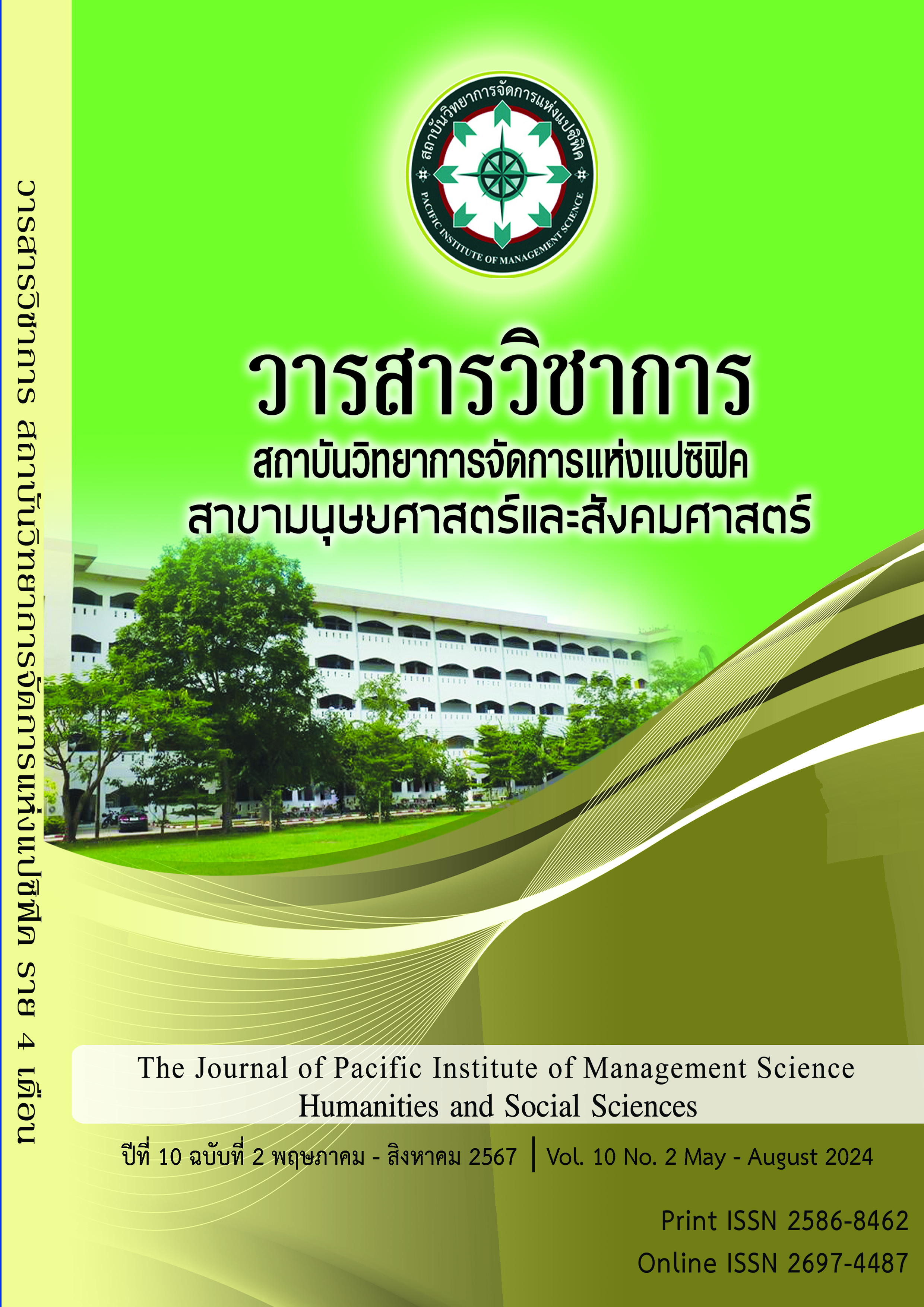Principal’ Leadership Skills Model for Primary schlools in Fuyang Under Anhui Province
Keywords:
Leadership skill model, Primary schools’ principals in Fuyang, Anhui ProvinceAbstract
The objectives of this research were: (1) To determine the components and indicators of principal leadership skills for primary school in Fuyang under Anhui Province. (2) To propose the principal leadership skill model for primary schools in Fuyang, Anhui Province.The population of this study included 953 principals, and teachers of primary schools in Fuyang, the People's Republic of China. A stratified random sampling was used to sample, totaling 412 persons. The instrument for collecting data was a questionnaire. Descriptive statistics, percentage, arithmetic mean standard deviation, and the Confirmatory Factor Analysis were used to perform data analysis through the statistical computer software.
Research results revealed that (1) the components and indicators was screened from theoretical framework, it consisted of 4 factors and 13 indicators namely: creative skills, communication skills, collaboration skills and vision skills; (2) leadership skills model that developed for primary schools’ principals was fit with the empirical data, the value of Chi-square (χ2)= 95.24, Relative Chi-square (χ2/df) = 1.98, Degree of Freedom (df)= 48, Goodness of Fit Index (GFI)= 0.97, Adjusted Goodness of Fit Index (AGFI)= 0.94, and Root Mean Square Error of Approximation (RMSEA)= 0.05, all in line with specified criteria. And the key factors had the weight between 0.84 - 0.97, higher than 0.70; indicators between 0.89 - 0.95, higher than the criterion as 0.30. The key components should be given priority by promoting and developing the key components of creative skills first, followed by communication skills, collaboration skills, and vision skills, respectively. The key components of creative skills should be focused on the following sub-components: stretching imagine challenges and origination or ideas begin, respectively. Key components: vision skills should focus on the following sub-components. Creating vision and communicating vision, respectively.
References
Agresti A. (2015) Multivariate Analysis: Discrete Variables (Overview Author links open overlay. International Encyclopedia of the Social & Behavioral Sciences (Second Edition), Pages 131-136.
Best & Kahn James V. (1993). Research in Education. 7 th ed. Boston : Allyn and Bacon. p. 246.
Cortina, J. M. (1993). What Is Coefficient Alpha? An Examination of Theory and Applications. Journal of Applied Psychology, 78, 98-104. https://doi.org/ 10.1037/0021-9010.78.1.98
Denise, cox. (2014). Leadership communication in the 21st century. Retrieved April 23, 2014, from https://www.newsweaver.com/successful-leadership- communication- looklike/#.Vo6GnRWLSUn
Farrell, A. M., and Rudd, J. M. (2011). Factor analysis and discriminant validity: A brief review of some practical issues. Retrieved January 4, 2011, from http://www.duplica tion.net.au/ANZMAC09/papers/ANZMAC2009-389.pdf
Fornell, C., & Larcker, D. F. (1981). Structural Equation Models with Unobservable Variables and Measurement Error: Algebra and Statistics. Journal of Marketing Research, 18, 382-388. http://dx.doi.org/10.2307/3150980
Fullan, Michael. (2012). 21st Century Leaders hi p: Looking Forward. [Online]. Available from: http://www.edu.gov.on.ca/eng/policyfunding/ leadership/ fall2012.pdf [Accessed 19 April 2013].
Greenberg, M. (2012). Five Essential Skills for Leadership in the 21st Century. Retrieved Jun 19, 2012, from https://www.psychologytoday.com/ blog/the-mindful-self- Express/201206/five-essential-skills-leadership-in-the-21st-century
Hair, J. F., Hult, G. T. M., Ringle, C. M., Sarstedt, M., Danks, N.P., & Ray, S. (2021). Partial Least Squares Structural Equation Modeling (PLS-SEM) Using R. Cham: Springer.
Hair, J., et al. (2010). Multivariate data analysis (7th ed.). Upper saddleRiver, New Jersey: Pearson Education International
Kim, J.-O., & Mueller, C. W. (1978). Factor Analysis. Statistical Methods and Practical Issues. Sage..
Kiral, (2020). The relationship between the empowerment of teachers by school administrators and organizational commitments of teachers. International Online Journal of Education and Teaching (IOJET), 7(1). 248-265.
Pett, M. A., Lackey, N. R., & Sullivan, J. J. (2003). Making sense of factor analysis: The use of factor analysis for instrument development in health care research. Thousand Oaks, CA: Sage Publications
Poonpong Suksawang. (2020). Structural Equation Models (3rd edition). Chonburi: A.P.Blu print.
Tacq, Jaequs. (1997). Multivariate Analysis Techniques in Social Science Research from Problem to Analysis. London: Sage Publication.
Rex, B. K., (2011). Principles and practice of structural equation modeling. (3rd ed.). New York: Guilford Publications.
Williams, Pat; Denney, Jim. (2016). Leadership Excellence: The Seven Sides of Leadership for the 21st Century--Updated and Expanded Edition. Published by Shiloh Run Press. ISBN 10: 1634097912. ISBN 13: 9781634097918
Downloads
Published
Issue
Section
License
Copyright (c) 2024 Pacific Institute of Management Science

This work is licensed under a Creative Commons Attribution-NonCommercial-NoDerivatives 4.0 International License.
บทความที่ได้รับการตีพิมพ์เป็นลิขสิทธิ์ของ สถาบันวิทยาการจัดการแห่งแปซิฟิค
ข้อความที่ปรากฏในบทความแต่ละเรื่องในวารสารวิชาการเล่มนี้เป็นความคิดเห็นส่วนตัวของผู้เขียนแต่ละท่านไม่เกี่ยวข้องกับสถาบันวิทยาการจัดการแห่งแปซิฟิค และคณาจารย์ท่านอื่นๆในสถาบันฯ แต่อย่างใด ความรับผิดชอบองค์ประกอบทั้งหมดของบทความแต่ละเรื่องเป็นของผู้เขียนแต่ละท่าน หากมีความผิดพลาดใดๆ ผู้เขียนแต่ละท่านจะรับผิดชอบบทความของตนเองแต่ผู้เดียว







